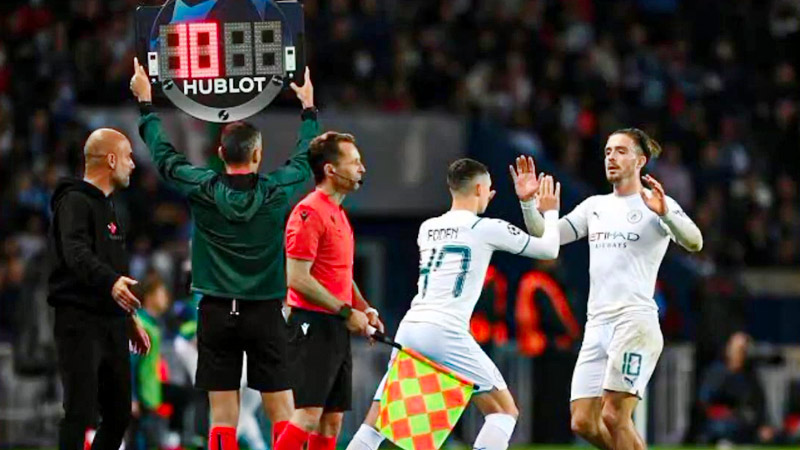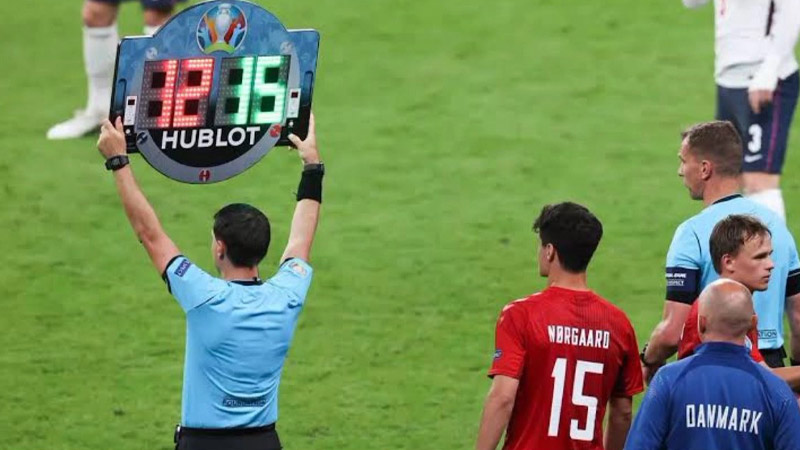In any football match, you have five substitute players in total. Meaning, that for any event when a player is exhausted or simply another player can offer a better lineup, you can replace up to five players.
Soccer is made of eleven players and that includes the goalkeeper too. The roles involve defenders, forwards, and midfielders. And, every role has a backup player ready on the bench.
The match is 90 minutes long, and stoppage periods and extra times (if needed) can add an additional 60 minutes at best. Hence, it’s quite usual for the players to take a break and assign their position to another.
So, what rules does Soccer have for substitution? Today, we will take a deep dive into the Soccer Substitution Rules.
Whether you are a wannabe soccer player or simply a soccer enthusiast, we will give you a proper head back.
Who Are the Substitutes in Soccer?
A substitute player doesn’t join the players at the beginning of the match. The match goes on and they wait on the bench. You may notice them stretching a bit and warming up themselves to wait for their turn.
When the decision is made to remove one active player from the field, one substitute player gets up and joins his teammates on the field.
How Many Substitute Players Are In Soccer?
As mentioned earlier, there is a substitute player for each position on the bench.
So in total, there can be five to twelve substitute players. The number can vary based on rules from different leagues or tournaments.
Additionally, the extra periods can also determine or limit the number of substitute players for some leagues.
For instance, professional soccer leagues allow five to six players during the extra time. Until 2020, new rules were made and a team can only have 5 substitutions.
On the other hand, in youth or international friendly matches, you can have as many substitutions as the match may need.
Substitute Players During the Stoppage
Stoppage times are the additional times after the soccer half. After 45 minutes, an additional 5-6 minutes are available (as per the referee) to cover up the time wasted during the play.
Does Soccer substitute players during a stoppage time? Yes! Based on Soccer rules, you have to substitute players during the stoppage play only if the referee allows it.
However, you can’t replace too many players as it will also interfere with the soccer playtime.
How Soccer Substitution Rules Changed Over Time?

Substitution rules vary for different leagues and soccer organizations. Throughout Soccer history, we have traces of change in the overall substitution policy.
You can be certain that, the substitution rules we see today have not always been like this.
Soccer was invented in 1863. After almost 100 years of Soccer, the substitution rules were placed in 1958.
But the idea originated in the 1954 World Cup and experimented with since then.
The early rules stated that only one player’s substitution was permitted during this time. Also, authorities can substitute the goalkeeper if necessary.
This went by for thirty years until 1988 when the number of substitutions increased to two players.
In 1995, there was some improvement, you could now have 3 substitutions in total set by the International Football Association Board (IFAB).
The rules stayed the same for 30 years. In 2018, one more substitution (the 4th) was added to the extra time of a soccer match.
The rules were again revised in 2020 when FIFA allowed five substitutions in the regulation game and during the extra time. But that was a temporary move!
In 2021, the IFAB permanently offered 5 substitutions per game. Ever since then, we have had the five ideal substitutions in soccer during the regulation period.
How Substitution Takes Place in Soccer?
As mentioned earlier, in Soccer, you can substitute players during the stoppage play only.
Note that, stoppage doesn’t happen after halftime. It can also happen when there is a foul or violation, or the ball is out of bounds.
A successful goal can also result in a stoppage during the play. Plus, whenever a player is injured, a stoppage is essential.
You only have three slots to use the substitutions. This leads you to make multiple substitutions at once to avail of all five.
Can A Substitute Player Return To Game After An Out?
A substitute player who plays like any other regular player. He can replace any player on the field. Genuinely, during a substitution, the referee presents a sign and displays the jersey number of the player who is going to substitute.
Another number also shows up at the same time. It is the jersey number of the player who is going to be substituted.
Normally, when a player is substituted out of the play, he may not return to play. It equally goes for the Star Player too.
When a star player is substituted out of the play, this may be the end of him. Plus, substitutions are not always to replace players.
To change the formation or come up with a better lineup, often coach can decide to use another player in the match.
Substitution can also lead to a better formation, one that is more successful. With the new formation, players who have been substituted will not receive another opportunity to get in the game.
So, yes! This is how soccer substitution rules work in the play! Both teams get equal privilege and the right number of substitutions.
Last Words
Soccer substitution is an essential element for the players and the overall elevation of the match. A long-lasting match of one and a half hours or even more can take a high toll on the players. The player’s exhaustion is a daily routine! Additionally, energy drain can lead to poor performance.
Substitution can come in really handy for such scenarios to resume the match and maintain, at some point boost up, the speed of the game.
So, what do you think of soccer substitution rules? Let us know in the comment below. Also, don’t forget to share this article with your friends and soccer lovers around you.
For more, stay in tune with us!







